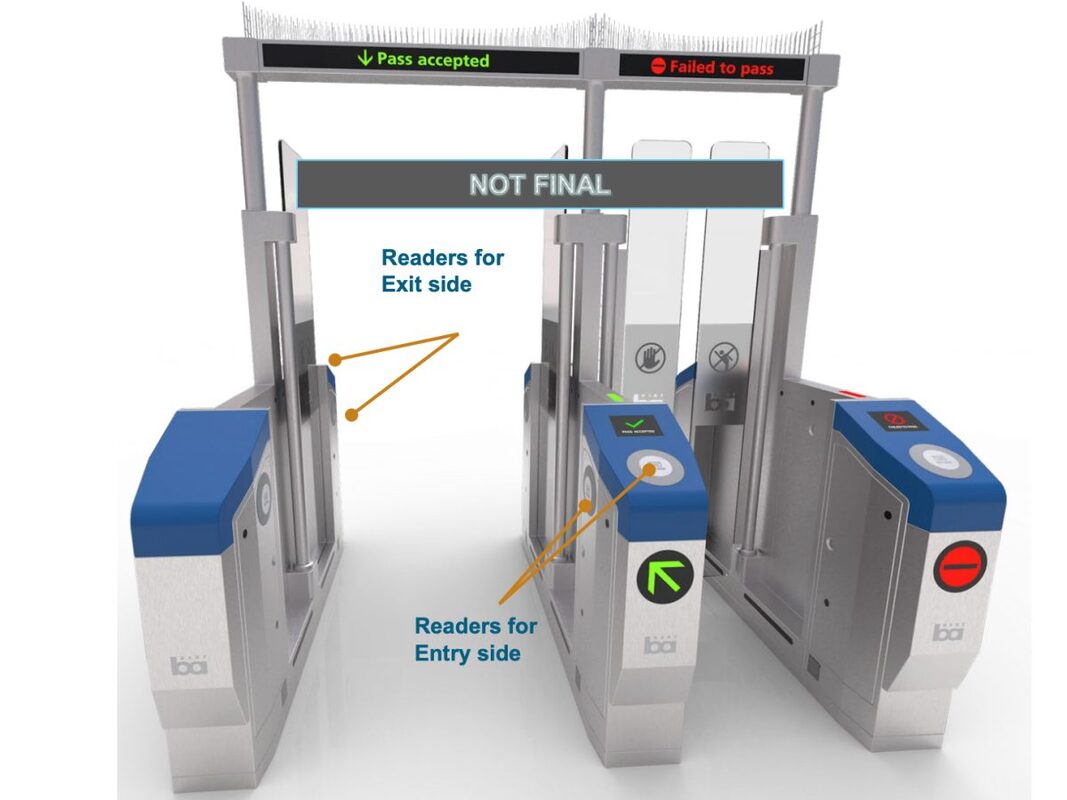BART’s new fare gates, currently installed at West Oakland station and set to be installed in others, are over 6 feet tall and stretch from wall-to-wall at most stations.--Mila Boyden,8th Grade
Bart is the number one form of public transportation in the Bay Area.
The average Bart Fare is $4.43. If you ride BART twice a day, for example going to and from school, that's around 10 dollars daily. There are about 20 school days per month which causes students to pay around $200 per month just to get to and from school. In California, there are 180 required days for schools to have. That's 1,800 for one school year, just to get to and from school
There are many reasons why students ride BART to get to and from school. Students' families may not have a car or have to get to work and don’t have time to drive them to school. When students don’t have enough money to pay for BART fares twice a day they often resort to evading fares, the most common way of doing this is by hopping the turnstiles used to guard the BART stations.
To prevent fare evasion, BART has installed new security measures to protect its stations and customers. “BART has made the historic purchase of brand-new fare gates to be installed system-wide as part of its latest effort to win riders back and overhaul safety in the system. The new fare gates bring a new look and improved experience, offering state-of-the-art technology that will boost safety by reducing fare evasion, enhancing access for people in wheelchairs and those who bring bikes and strollers on BART, and optimizing the reliability and maintenance needs of the fare gates,” announced bart.gov.
The average Bart Fare is $4.43. If you ride BART twice a day, for example going to and from school, that's around 10 dollars daily. There are about 20 school days per month which causes students to pay around $200 per month just to get to and from school. In California, there are 180 required days for schools to have. That's 1,800 for one school year, just to get to and from school
There are many reasons why students ride BART to get to and from school. Students' families may not have a car or have to get to work and don’t have time to drive them to school. When students don’t have enough money to pay for BART fares twice a day they often resort to evading fares, the most common way of doing this is by hopping the turnstiles used to guard the BART stations.
To prevent fare evasion, BART has installed new security measures to protect its stations and customers. “BART has made the historic purchase of brand-new fare gates to be installed system-wide as part of its latest effort to win riders back and overhaul safety in the system. The new fare gates bring a new look and improved experience, offering state-of-the-art technology that will boost safety by reducing fare evasion, enhancing access for people in wheelchairs and those who bring bikes and strollers on BART, and optimizing the reliability and maintenance needs of the fare gates,” announced bart.gov.
BART’s new fare gates, currently installed at West Oakland station and set to be installed in others, are over 6 feet tall and stretch from wall-to-wall at most stations, making them impossible to jump over and crawl under. These new gates consist of two doors made of transparent polycarbonate that swing open once a customer pays by holding their clipper card to a scanner for three seconds. These gates will also allow other payment options such as credit or debit cards and a phone/watch with Apple Pay or Google Pay.
These new gates will soon be placed at Antioch, Civic Center, Fruitvale, Montgomery, Powell, Richmond, SFO, and 24th St. stations.
So far, BART has collected $86,000,000 out of the $90,000,000 that is needed to fund the project. $16,000,000 are from federal funds, $15,000,000 are from state funds, $43,000,000 are from local funds, and $12,000,000 are from BART funds according to the project fact sheet.
BART posted updates on its new security systems on Linkedin, stating “This is an overall structure for the next generation BART fare gates. This is a work in progress and not the final design. We're ready to share a photo of the structure for the very first time. The next generation BART fare gates are being developed in a lab in downtown Oakland.”
Many different people replied to BART’s post with different views on the matter. While some people supported these changes, others were confused about why they were necessary.
One user responded to BART’s post saying, “Instead of spending taxpayer dollars on fare evasion mechanisms, you should lower the prices of fares. I spent $10 to ride from SFO to Powell. I was in disbelief that it costs that much. Public transportation is supposed to be cheap and safe. Right now, it’s neither.”
Another user responded, “It's disappointing to see so much money being poured into criminalizing non-payment of fares rather than using the *same amount of money* to expand the Clipper START system to include folks with RTC Clipper Cards (for folks with disabilities), and/or to even make the whole Clipper START program entirely free. Why are we as taxpayers paying to treat a symptom rather than the root cause?”




